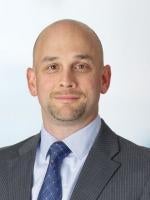In the time since Alice changed the landscape of patent eligibility for certain types of inventions, the Federal Circuit has begun pumping out opinions interpreting this landmark Supreme Court case. The expanding body of law has enabled lower courts to find their rhythm when utilizing the Alice test to determine subject matter eligibility. In one recent Massachusetts case, the court tackled this issue in the context of a Rule 12(c) motion seeking to invalidate several medical device-related patents.
Plaintiff CardioNet sued Defendant InfoBionic in 2015, alleging that InfoBionic’s remote cardiac arrhythmia detection platform infringed several CardioNet patents relating to cardiac monitoring methods and systems. InfoBionic subsequently filed a motion for judgment on the pleadings with respect to four of the patents-in-suit, claiming that these patents do not recite eligible subject matter under 35 U.S.C. § 101.
In rendering her decision, Judge Talwani subjected each patent identified in the motion to scrutiny under the two-part Alice test—which asks the decision-maker to determine whether (1) the claims are directed to an abstract idea, and (2) if so, whether the claims include an inventive concept sufficient to render the claims patent-eligible. For computerized technology such as CardioNet’s patents, courts should consider whether the claims involve a specific improvement to computer functionality that goes beyond merely using existing computer capabilities and generic computing devices as a tool to carry out the activity.
The first patent-in-suit (the ’767 patent) related to a method for monitoring patient data and determining when more data is needed, through optimization of data transmission between a remote monitoring unit and a central unit. According to the claims, the remote unit sends a portion of the monitored patient data to the central unit and, if the central unit determines that additional patient data is required, the central unit instructs the remote unit to transmit the additional data at a predetermined time. The ’767 patent’s specification explained that this selective method of data transmission achieves “more judicious use of battery power, reduced cellular telephone connect time, and better managed medical personnel time.”
In evaluating patent eligibility, the court first concluded under Alice step one that the above method is directed to the abstract idea of “gathering a limited set of patient data and then determining whether to gather additional data”—much like physicians and nurses might do without the use of computing devices. However, the court could not determine as a matter of law that the method lacks an inventive concept under Alice step two because the method “purports to improve on the previous technology, which did not allow for selectivity in determining the data set that would be transmitted to the central unit.” Therefore, Judge Talwani did not deem the ’767 patent ineligible at this juncture of the case.
In evaluating another patent (the ’715 patent), the court relied on the “machine-or-transformation” test from Bilski in finding the claims patent eligible. The ’715 patent is directed to an apparatus to monitor a patient’s electrocardiogram. The apparatus included a T wave filter that, when activated, reduces the amplitude of T waves, while preserving or slightly increasing the amplitude of R waves—enabling a physician to determine an accurate morphology of the patient’s heartbeats.
Here, Judge Talwani found the claimed apparatus to be directed to the abstract idea of “filtering raw cardiogram data to optimize its output” because it merely automates the manual process of using pen and paper to identify an R wave from a T wave. According to the court, “[i]mprovements…that only ‘automate or otherwise make more efficient’ existing technology in the medical field are abstract ideas.”
But, Judge Talwani determined that the presence of the T wave filter in the claim—in conjunction with the other recited components—placed a meaningful limitation on the scope of the claim to render it patent eligible under the “machine-or-transformation” test. The court analogized the T wave filter to the GPS receiver from the patents in SiRF Tech case. SiRF Tech., Inc. v. Int’l Trade Comm’n, 601 F.3d 1319, 1333 (Fed. Cir. 2010). There, the Federal Circuit found that the inclusion in the claims of a GPS receiver that translated satellite signals into another format meaningfully restricted the claim scope because such translation had to be performed by a machine. Because the function carried out by the T wave filter in the ’715 patent could not be done in the human mind, Judge Talwani ruled that the ’715 claim is sufficiently tied to a machine so as to render it eligible for patenting under Section 101.
Finally, the court deemed ineligible two other patents implicated in the motion for judgment on the pleadings. Those patents related to a system for correlating computer-generated and human-assessed arrhythmia data to generate a more accurate pictographic representation of the information. Because the claims merely involved data manipulation and did not provide any technical improvement beyond making the correlation of such data more efficient, the court found these patents invalid under Section 101.
The court’s opinion in this case deftly pieces together the Federal Circuit’s developing Alice jurisprudence to parse the subject matter eligibility issues at the core of the defendant’s motion for judgment on the pleadings. Litigants should take such analysis to heart when examining the scope of asserted patent claims to see whether such claims might be subject to attack on similar grounds.
The case is CardioNet, LLC v. InfoBionic, Inc., Civil Action No. 1:15-cv-11803-IT, before Judge Indira Talwani. A copy of the Court’s order can be found here.



 />i
/>i
